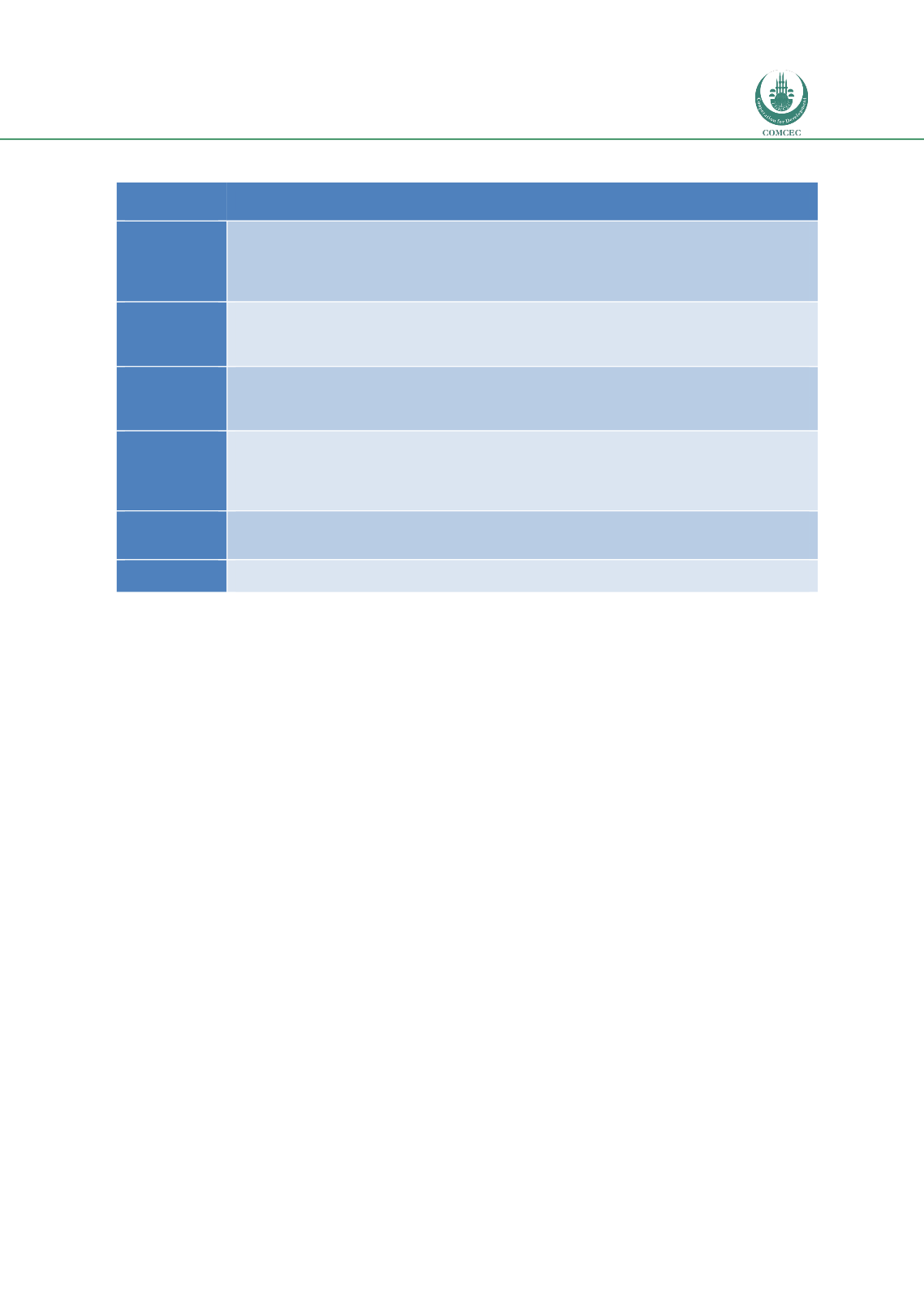

Reducing Postharvest Losses
In the OIC Member Countries
49
Table 15: Stages in the milk and dairy value chain, and causes of losses
Stage in the
value chain
Causes of loss
Pre-harvest
Breed of dairy herd
Lack of feed
Diseases
Lack of water
Lack of veterinary and other services
Milking
Inappropriate equipment and milking methods (e.g. unhygienic practices)
Animal diseases affecting milk yields (e.g. mastitis)
Adulteration of milk
Lack of storing and cooling facilities at farm level
Aggregation
Operation of cooling centres fraught by challenges such as high cost of equipment or irregular power
supply;
Collection of chilled milk (e.g. during rainy season, or if distances are long)
Lack of chilled milk price premium.
Processing
Difficulties to collect milk from small-holder farmers
Disruption of cold chain (e.g. due to power cuts)
Some dairy processing factories (e.g. cheese factories) lack cooling facilities and do not apply
pasteurisation
SME processors face challenges such as capacity, infrastructure, etc.
Marketing
Lack of means of preservation
Lack of appropriate transport
Large proportion of milk and dairy products is marketed through informal channels
Consumption
Spoilage of milk due to lack of preservation methods
Health risks due to unhygienic processing and storage of milk
Recommendations
The following provides an overview of the main measures required to improve the functioning
of the dairy value chains, and reduce the losses that take place at various stages in the chain.
The integration of smallholder dairy farmers into formal processing and marketing channels
(e.g. through farmer organisations or collection centres) is important for the development of
the dairy sector in OIC countries (COMCEC, 2015). This requires adequate support of
smallholder farmers such as training, technical services, feedstock supply, in order to assist
them raise both quantity and quality of milk. At the same time, considerable investments are
required into upgrading and modernising the existing processing and product handling
infrastructure. Further public support is needed in order to meet international quality
standards if milk and dairy products are to be exported (COMCEC, 2015).
Strategies to reduce postharvest losses (PHL) include investments in cold chain infrastructure,
training of chain participants in hygienic methods of handling products, and processing into
products with longer shelf life (FAO and AfDB, 2009, Page viii). At the same time, while cooling
is the preferred method of bulk milk preservation, this is sometimes not feasible due to cost or
irregular or absent power supply. In such areas an alternative method of preservation using
the internationally approved lactoperoxidase system (LPS) is possible for groups of farmers
linked to dairy processors (Smallholder Dairy Project Policy Brief 8).
2.2.7.
Fish and Seafood Products
Introduction
Global consumption of fish and other aquatic is increasing both in absolute terms and in terms
of per capita consumption. This is shown in Table 16, below.
















